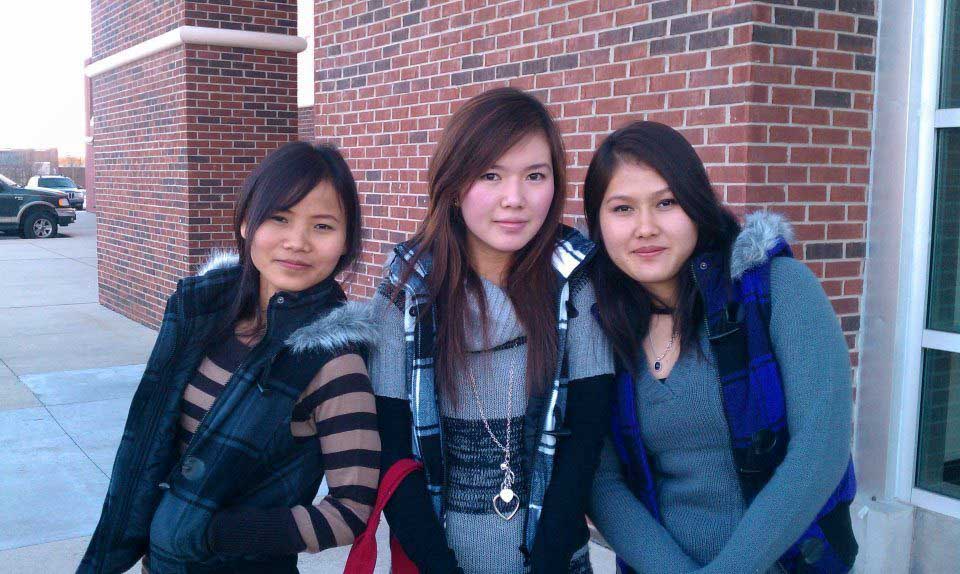Approximately 1 2 Individuals in What Population Complete High School
In the USA, public school starts between the age of 4 and 6 and continues until 16 to 18 years old. You can also send your children to pre-school at an early age. Learn about the different levels of education in the USA, school placement in the American education system, and different levels within the same grade.

In the US education system, your children must, by law, go to school for a certain number of years between certain ages. The ages and number of years for public school in the USA varies from state to state. You can find out the ages and number of years in your state.
The education system in US public schools
Early childhood education
Early education is a term used to talk about young children being exposed to education. Even when your child is a baby, it is important to read to them, sing with them, and help them learn both your first language and English. There is research that shows children who are bilingual (speak 2 or more languages) have more advantages than children who speak only 1 language. Early childhood education centers and daycare centers are available for infants through children age 4 or 5.
Preschool
Preschool helps children (ages 3 and 4) develop. Some schools will start children in preschool at 2½. Preschool helps them be ready for school at age 5 or 6. One option for preschool is called Head Start. Preschool-aged children from low-income families can attend Head Start programs. Head Start is a low-cost preschool run by the government. You can search for a Head Start program near you.
Elementary school
Children usually begin elementary school with kindergarten (K) at age 5 and continue through grade 5 or 6. They leave elementary school around age 10 or 11. Children learn many subjects from one teacher in a single classroom.
Middle school (also called junior high school)
Middle school teaches students grades 6 through 8. They are around ages 10 to 14. Middle school students usually switch from classroom to classroom. They may have many different teachers in one school day. In smaller communities, children will not switch schools to go to middle school. They will keep going to elementary school.
High school
Students attend high school between the ages of 14 and usually 17 or 18. The classes are arranged by subjects. A student may have many teachers in one day. Some students can take advanced classes. Some students can take classes that prepare them for work or for college. High schools have clubs, activities, sports, work-study arrangements, and other activities.

School placement in the American education system
School placement means deciding in which grade your student will be placed. It can also mean where a school places a student within their grade.
Many refugee students may have missed school while they were in camp or fleeing their country. They may be at different grade levels than a typical American student of the same age. Some students might be at a high-grade level but do not speak English yet. Those students may have trouble in harder classes until they learn English better. Schools in the USA sometimes place students in the wrong grades.
How will schools place my child?
Students may take some tests before the start of the school year or at the very beginning of the school year. The tests might be written. They might have an adult read questions to a student. It is different for every school district.
If you think your child is placed in the wrong grade, you can talk to the teacher, principal, or the school staff who tested and placed your child.
- Ask, "What was your reasoning?" The school can help you understand their decision.
- Explain why you think the placement is wrong. They may be able to change the placement if they agree with your reasons.
How does the school decide which class level my child takes?
There are many reasons the school chooses a level for a student. These are common reasons:
- How well the student understands English or their test scores
- Parent/guardian recommendations
- Standardized test scores, as appropriate
- Willingness to complete challenging assignments
- Student interest or motivation
- Teacher or counselor recommendation
- Samples of student work
Same grade, different level
Middle and high schools have classes that are taught at different levels in the same grade. Some are harder and some are easier. The names of the courses sometimes describe the level of difficulty. The words change depending on the school district.
Names for classes that are easier or use easier English levels:
- Inclusion
- Basic skills
Names for classes at a typical level for the grade:
- Regular
- Non-honors
Names for classes at a higher or advanced level:
- Honors
- GTE (Gifted and talented education)
- Advanced placement (AP)
- IB (International Baccalaureate)
More from USAHello
Approximately 1 2 Individuals in What Population Complete High School
Source: https://usahello.org/education/children/grade-levels/
0 Response to "Approximately 1 2 Individuals in What Population Complete High School"
Post a Comment